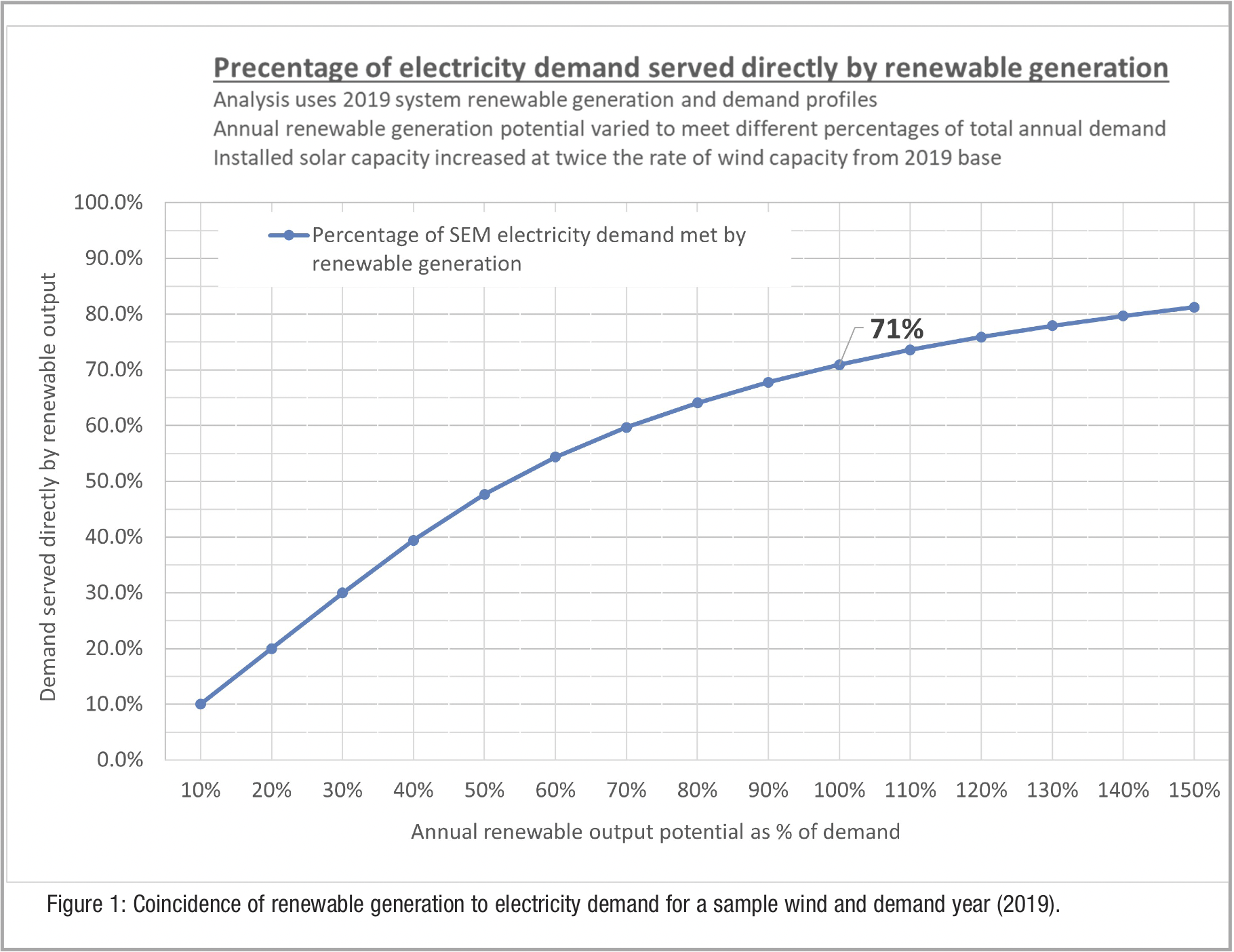
Achieving net gain from offshore wind farms
27th May 2025
Great British Energy Bill: Uncertainty remains over Northern Ireland implications
27th May 2025Storage required to manage renewable oversupply
If not proactively managed, curtailing renewable generation when there is more supply potential than demand could become a major barrier to efficiently delivering the energy transition. Paddy Larkin, Chief Executive of Mutual Energy, outlines the challenges facing the industry, and how the development of energy storage is key to addressing them.
Northern Ireland has integrated world leading levels of renewable generation onto its grid. To meet emission reduction targets however, significantly more renewable capacity will need to be installed, much more than is required to meet peak electricity demand.
Installing more renewable generation capacity than peak electricity demand will lead to the potential for significant oversupply at periods of high renewable generation output. If not proactively managed, this will result in renewable generators being curtailed to maintain the stability of the grid.
A new Renewable Energy Support Scheme for Northern Ireland, currently under development by the Department for the Economy, is expected to compensate renewable generators for curtailing surplus output. This means that if oversupply is not appropriately managed, generators contracted under the scheme will be paid to not produce electricity at times of high potential production. This would be extremely inefficient and unnecessarily increase costs for Northern Ireland energy consumers.
Without mitigation, the more renewable generation that is connected, the greater the amount of energy that will need to be curtailed.
A means to capture and utilise this wasted energy is urgently required to ensure that spiralling compensation costs do not undermine further renewable investment, or create an unsustainable burden for energy consumers.
Matching renewable supply with demand
Analysis indicates that if installed renewable generation capacity in the Single Electricity Market (SEM) was scaled up so that its potential annual production matched total annual electricity demand, the mismatch in profiles would result in only around 71 per cent of demand being met across a year, see Figure 1.
The electricity system therefore needs a paradigm shift, away from dispatching flexible fossil fuel generation to meet electricity demand to matching electricity consumption to inflexible renewable generation sources. This shift can only be delivered through development of energy storage solutions that can match up otherwise surplus renewable generation to future electricity requirements.
How will consumers be affected if energy storage is not delivered?
The average metric typically used to measure curtailment levels significantly underestimates the marginal impact of adding the next MW of renewable generation to the system. This is because it smears that impact across the entire installed renewable portfolio. The marginal rate of curtailment is a more accurate measure of the efficacy of adding more renewable generation capacity to the power system.
Figure 2 compares the impacts on average and marginal curtailment (specifically due to oversupply) when increasing installed renewable capacity in the SEM. It shows that the rate of marginal curtailment increases significantly more quickly than the average measure. If installed renewable capacity was set such that its potential total output equalled 100 per cent of annual demand, the next MW of renewables would experience curtailment, if measured on a marginal basis, of around 69 per cent.
In the absence of increased system flexibility, such as that provided by storage, adding wind and solar generation capacity therefore becomes increasingly inefficient, as for every additional MW added there is less useable renewable generation produced. While adding a different mix of renewable generation technologies could help, because it changes the coincidence of production to demand, the fundamental problem will not go away.
The full electrification of heat demand could make the situation worse
Unlike electrification of transport, which opens up the possibility of dynamic ‘vehicle to grid’ interaction, heat demand is not particularly flexible and has high peak consumption levels relative to average annual requirements. This peak demand tends to occur during cold winter periods. It is therefore negatively correlated to solar production (occurring on days with fewer daylight hours), while there is no strong correlation between cold weather and increased wind speeds. This means that electrifying heat demand is unlikely to help improve the coincidence of renewable generation with electricity demand, and could even make the mismatch worse.
While use of hybrid heat pumps that utilise renewable gases (like biomethane) could help, by allowing electrical heat demand to be at least partially shaped to match renewable output, storage would still be required to ensure consumer requirements are met when sufficient renewable generation is not available.
Next steps
While the analysis is not intended to be perfect, we believe the general trends demonstrated and issues raised are helpful in highlighting the importance of storage in delivering an efficient energy transition. It also raises some important fundamental questions that need to be urgently addressed: Are there sufficient energy storage technologies available to deliver upon our electricity system requirements? What are the costs to energy consumers of implementing these solutions?
It is vital that comprehensive and objective research is conducted in this area so that pragmatic, feasible solutions can be identified and implemented on a timeframe that matches our future rate of investment in intermittent renewable generation technologies.
Mutual Energy
W: mutual-energy.com
LinkedIn: www.linkedin.com/company/mutual-energy
X: @mutualenergy



